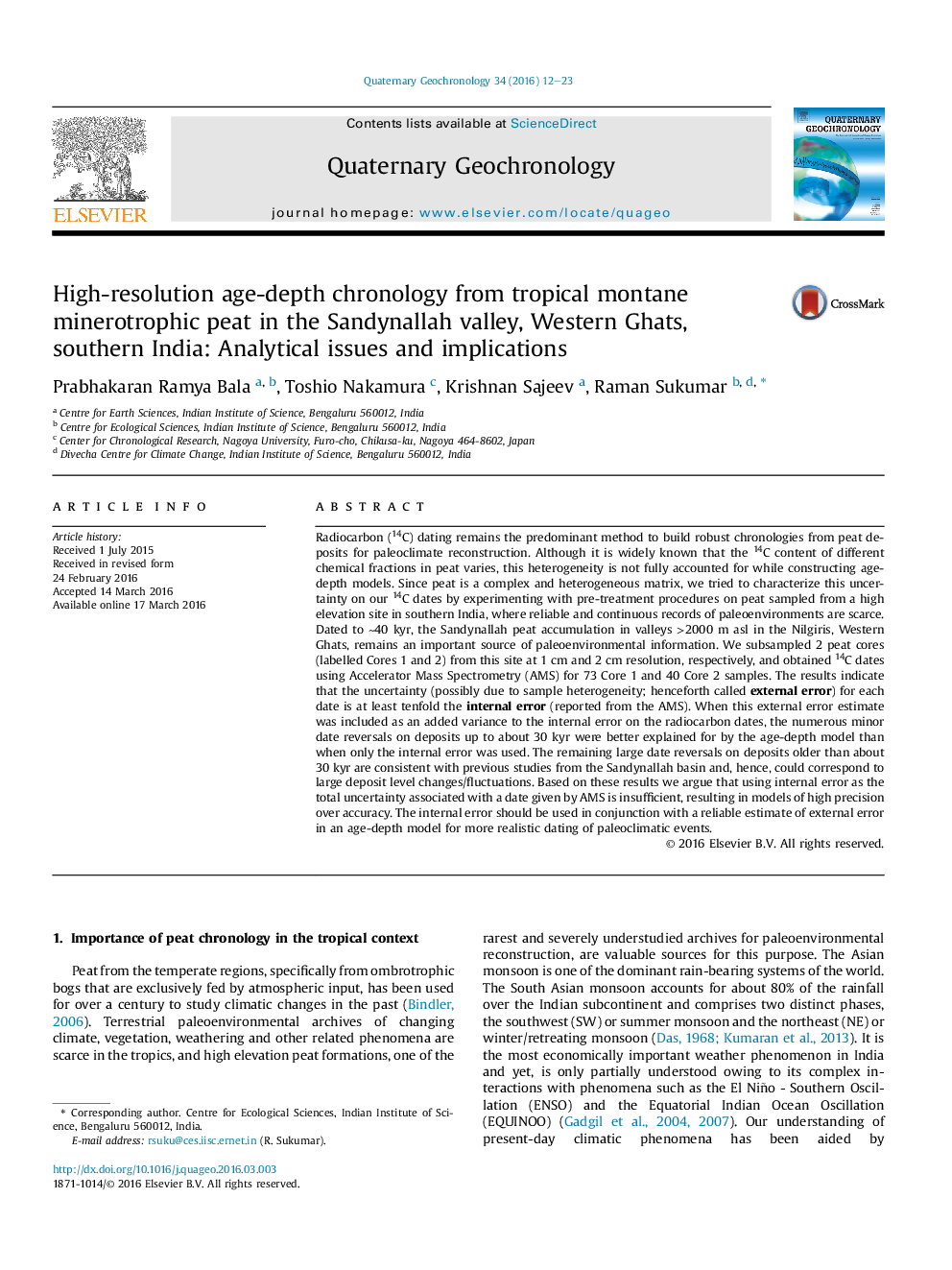| کد مقاله | کد نشریه | سال انتشار | مقاله انگلیسی | نسخه تمام متن |
|---|---|---|---|---|
| 4724847 | 1639842 | 2016 | 12 صفحه PDF | دانلود رایگان |
• Revised 14C date uncertainties incorporating discrepancies due to sample heterogeneity and pre-treatment methods.
• Confidence estimates of age-depth model with and without revised error showed significant differences.
• Numerous minor ‘inversions’, typical for tropical peat, explained by the model with revised uncertainties.
• Demonstrated need for incorporating more realistic date uncertainties in paleoclimate studies using material such as peat.
Radiocarbon (14C) dating remains the predominant method to build robust chronologies from peat deposits for paleoclimate reconstruction. Although it is widely known that the 14C content of different chemical fractions in peat varies, this heterogeneity is not fully accounted for while constructing age-depth models. Since peat is a complex and heterogeneous matrix, we tried to characterize this uncertainty on our 14C dates by experimenting with pre-treatment procedures on peat sampled from a high elevation site in southern India, where reliable and continuous records of paleoenvironments are scarce. Dated to ∼40 kyr, the Sandynallah peat accumulation in valleys >2000 m asl in the Nilgiris, Western Ghats, remains an important source of paleoenvironmental information. We subsampled 2 peat cores (labelled Cores 1 and 2) from this site at 1 cm and 2 cm resolution, respectively, and obtained 14C dates using Accelerator Mass Spectrometry (AMS) for 73 Core 1 and 40 Core 2 samples. The results indicate that the uncertainty (possibly due to sample heterogeneity; henceforth called external error) for each date is at least tenfold the internal error (reported from the AMS). When this external error estimate was included as an added variance to the internal error on the radiocarbon dates, the numerous minor date reversals on deposits up to about 30 kyr were better explained for by the age-depth model than when only the internal error was used. The remaining large date reversals on deposits older than about 30 kyr are consistent with previous studies from the Sandynallah basin and, hence, could correspond to large deposit level changes/fluctuations. Based on these results we argue that using internal error as the total uncertainty associated with a date given by AMS is insufficient, resulting in models of high precision over accuracy. The internal error should be used in conjunction with a reliable estimate of external error in an age-depth model for more realistic dating of paleoclimatic events.
Journal: Quaternary Geochronology - Volume 34, August 2016, Pages 12–23
